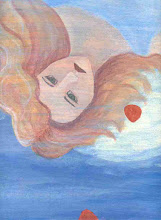Emma is my favorite Jane Austen novel. I'm re-reading it now in fact. I first discovered her when I was 19 -- just about the age of the title character in Austen's book. I related to her sharp tongue and slightly caustic wit all too well. I softened with age; I'm sure Emma would have, too. So, because I love Emma the book and Emma the character, I approached Emma, Mr. Knightley, and Chili Slaw Dogs with the same mix of interest and trepidation that I approached the Emma movie starring Gwyneth Paltrow. Neither disappointed.
Every time I review a "romantic novel", I feel the need to point out that I, in general, do not like romantic novels. In truth, I'm starting to think it is not the genre I dislike on the whole, as much as I really do not the bad writing that permeates the majority of the genre. I like well-written books. Emma, Mr. Knightley, and Chili Slaw Dogs is a well-written book.
Emma, Mr. Knightley, and Chili Slaw Dogs is the second in the Austen Takes the South series. I liked it even more than I liked the first book -- the writing felt tighter and I could see the interconnectivity of the characters. Just as in the first book, Hathaway doesn't try to re-tell an Austen story. Instead, she uses the Austen story as a springboard for her own story. There are shades of Austen throughout the book, and obvious nods, and a tone that is similar, but that's where the Austen influence ends. If all that is Jane Austen were to be removed from this book, this book would still stand. Somehow, I think Jane Austen would very much approve.
I've told you nothing about the story in this review. Nor do I intend to. This book is a perfect summer read. It's still summer...









